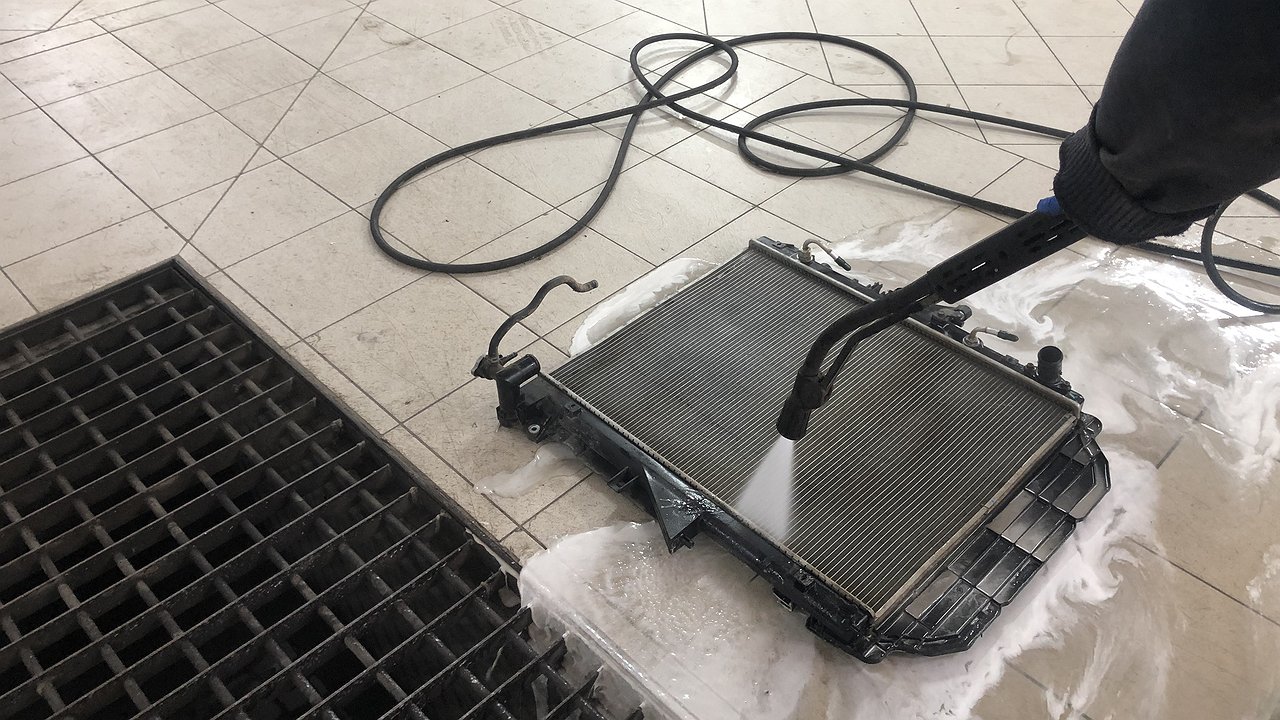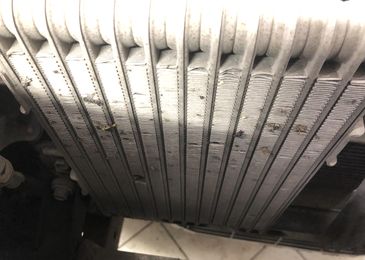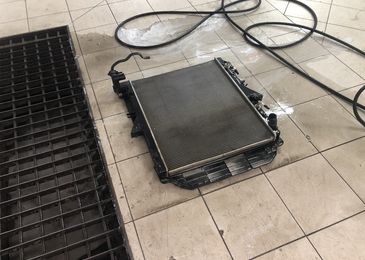Looking at the engine temperature arrow pointing to the sky, the driver can come up with a sober thought – whether to wash the radiator. Sensible, but not as simple as it seems at first glance. It makes no sense to pour water from a country hose on it, just pour the threads under the hood. By the way, the same can be said about the car wash service, where the dirt is simply hammered deeper into aluminum honeycombs with pressurized water.
After such procedures, cement is literally knocked out of the “bag” of dried insects, dust and debris. But you still need to wash the radiator, and this should be done every two years. Yes, yes, modern engines are damn hot, so even a slightly clogged cooler can do things by “Zhiguli” standards.
An experienced master can handle it in the garage, but it is much more convenient to carry out the procedure on a lift: the radiator is fixed both from below and from above, so you will have to “dance with a tambourine” in particular. From the tools you will need a set of wrenches, socket wrenches, penetrating lubricant, where without a hose and a jerry can. It’s funny that washing the radiator doesn’t always involve changing the coolant: modern antifreezes last 10 years, so the coolant can be safely drained into a jerry can and then used again.
Radiator cassettes are different, but as a rule they are all collapsible, so that you do not have to refill the same air conditioner after the procedure. We disassemble, we merge, we remove. Anyone who is present at the disassembly for the first time immediately understands why washing from a hose is useless in this matter: the main dirt accumulates between the radiators of the air conditioner and the engine, and it is almost impossible to crawl there. So “solid rings” should be consistently refused – they cannot do anything good for the radiator.















